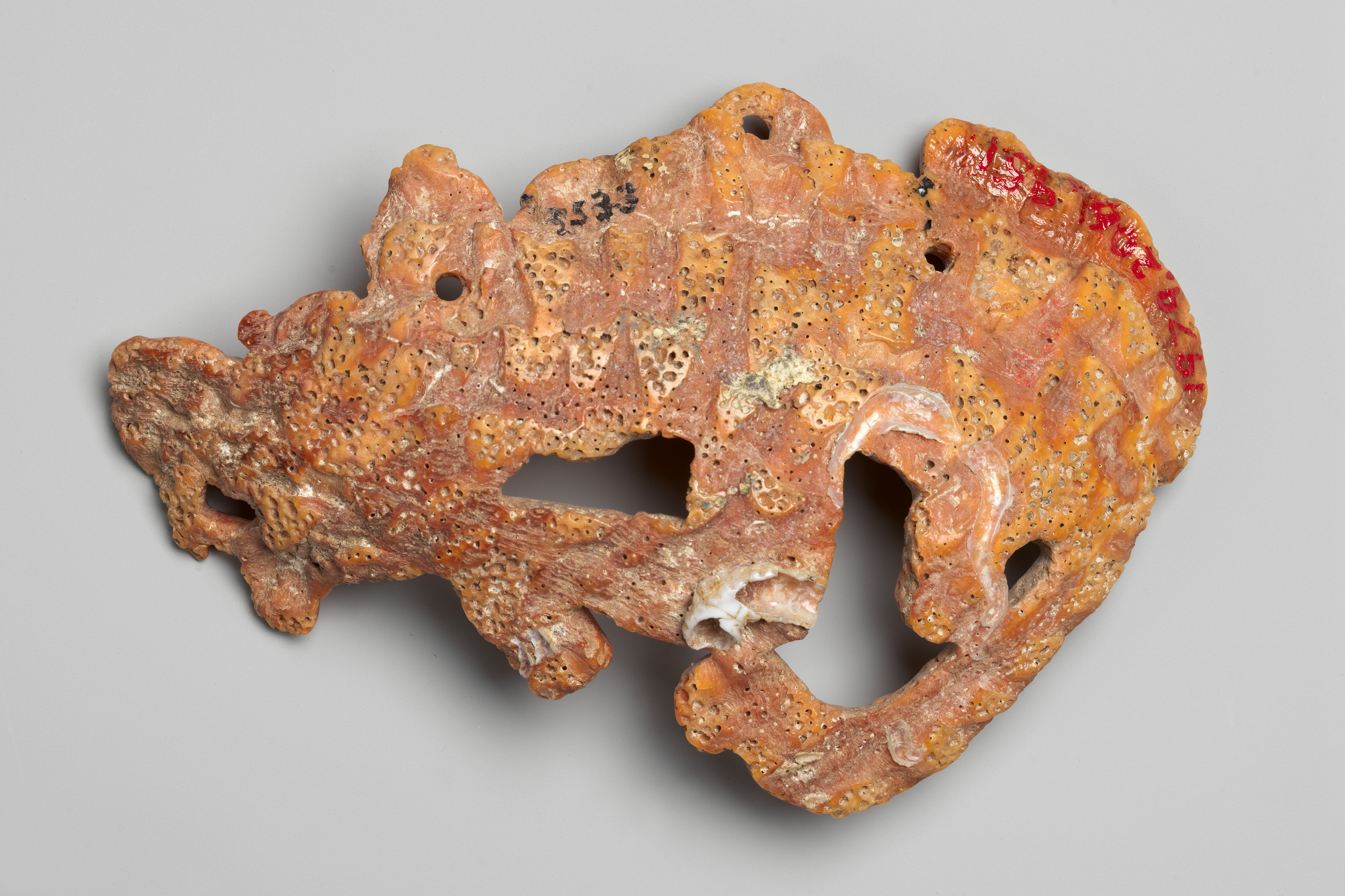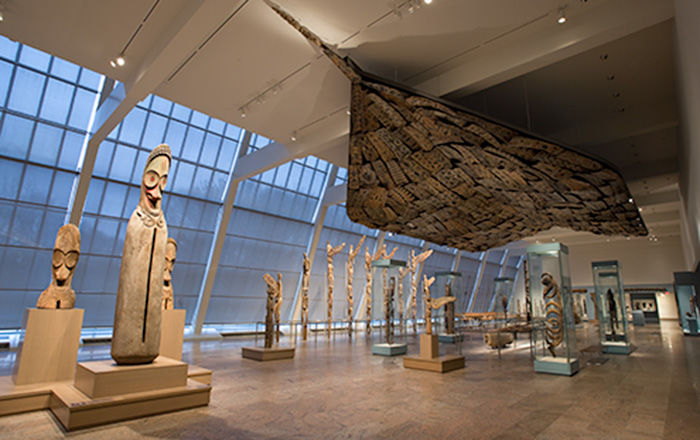Ornament in the shape of a mammal
Not on view
This orange shell pendant represents a four-legged mammal with a long tail, probably a stylized canine. A Maya artist painstakingly carved the outline of the animal and then drilled and shaped openwork negative space between the tail and the body, after thinning one half of the bivalve Spondylus princeps, utilizing the curve of the shell to portray the dog’s tail as extended toward the viewer. The natural ridges of the shell’s interior morph into hair on the ears, limbs, and back of the creature. Spondylus and other marine shells were imported from long distances as luxury materials for the regalia of Maya rulers.
The dog seems to snarl as it raises its snout to expose sharp teeth. A depression indicates the eye, framed by the upper jaw and the heavy supraorbital brow. The dog seems to be in motion, perhaps even depicted as on its back and flailing its four limbs in the air in a pose of submission. Three small drilled holes indicate that this shell dog may have been strung as a pendant or perhaps sewn into a garment. The dog, a widespread character in Maya art and texts across media, may have been an important symbol for a clan or the part of the name of its wearer.
Further Reading
Juárez Cossío, Daniel, Adrián Velásquez Castro, and Norma Valentín Maldonado El joven Dios del maíz. Tecnología y simbolismo de un pendiente de concha del Museo Nacional de Antropología. Estudios de Cultura Maya 47(1): 31-53, 2016.
Velásquez Castro, Adrián, Pre-Columbian Maya Shell objects: An Analysis of Manufacturing Techniques. In Ancient Maya Art at Dumbarton Oaks, edited by Joanne Pillsbury, Miriam Doutriaux, Reiko Ishihara-Brito, and Alexandre Tokovinine, Washington DC: Dumbarton Oaks, 2012, pp. 440-474.
Velásquez Castro, Adrián, Luxuries from the Sea: The Use of Shells in the Ancient Americas. In Pillsbury, Joanne, Timothy F. Potts, and Kim N. Richter, eds. Golden Kingdoms: Luxury Arts in the Ancient Americas. Los Angeles: J. Paul Getty Museum, 2017, pp. 91-98.
This image cannot be enlarged, viewed at full screen, or downloaded.
This artwork is meant to be viewed from right to left. Scroll left to view more.



